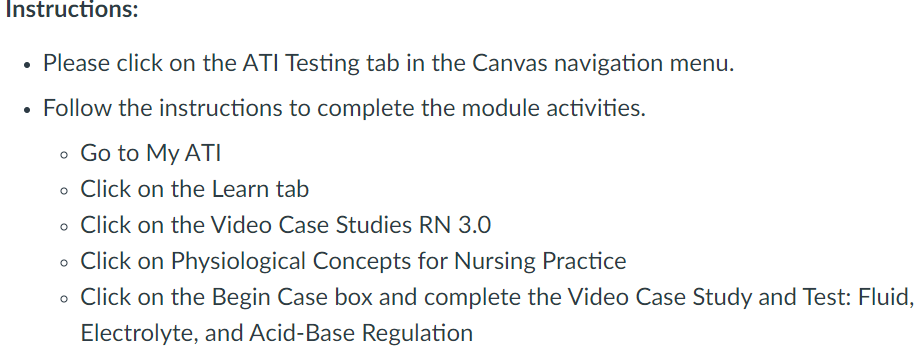NUR105 M2.6: ATI-Video Case Studies: Fluid, Electrolyte, and Acid-Base Regulation
A nurse is assisting in the care of a client who has heart failure and a prescription to receive a unit of packed red blood cells. The nurse should plan for the blood to infuse over which of the following lengths of time?NUR105 M2.6: ATI-Video Case Studies
Answer: 4 hr
Explanation: The transfusion of packed red blood cells should be administered slowly over a maximum of 4 hours to prevent increasing the workload of the heart.
A nurse is assisting in the care of a client who has a prescription to receive one unit of packed red blood cells. The client’s blood type is AB+, and the nurse receives a unit of A- blood from the blood bank. Which of the following actions should the nurse take?
Answer: Verify the unit of blood with another nurse.
Explanation: The unit of blood is compatible with the client’s blood type. However, the nurse should ensure that the blood unit has been verified by two nurses before initiating the transfusion.
A nurse is assisting an RN who is preparing to start an IV for a client who has a high risk for bleeding. Which of the following actions should the nurse take?NUR105 M2.6: ATI-Video Case Studies
Answer: Apply a blood pressure cuff set to 30 mm Hg.
Explanation: Instead of using a tourniquet, the nurse should apply a blood pressure cuff set to 30 mm Hg before starting an IV for this client. This helps protect the client’s extremity from bruising and bleeding.
A nurse is caring for a client who is receiving treatment for hyponatremia. The nurse should identify that which of the following findings is an indication that the treatment has been effective? (Select all that apply.)
Answers:
The client states their muscle spasms are absent.The client denies being confused.
Explanation: The absence of muscle spasms and the client’s clear mental status indicate that sodium levels have improved, reflecting the effectiveness of the treatment.
A nurse is assisting in the care of a client who requires an IV replacement. The client is dehydrated and requires a smaller gauge catheter than the #20-gauge being replaced. Which of the following gauge catheters should the nurse recommend using?NUR105 M2.6: ATI-Video Case Studies
Answer: #22-gauge
Explanation: As the gauge number increases, the catheter size decreases. In this case, a smaller #22-gauge catheter would be appropriate for a dehydrated client.
For individuals seeking assistance with ATI testing, nursing education, or NCLEX Exam preparation, I recommend considering the support provided by our service at fixmygpa.com. Our experienced tutors can help you excel in your studies and prepare effectively for your nursing exams. Whether you need assistance with content review, practice questions, or test-taking strategies, we are here to guide you toward academic success and help you achieve your nursing career goals. Don’t hesitate to reach out for the support you need to thrive in your nursing education.



